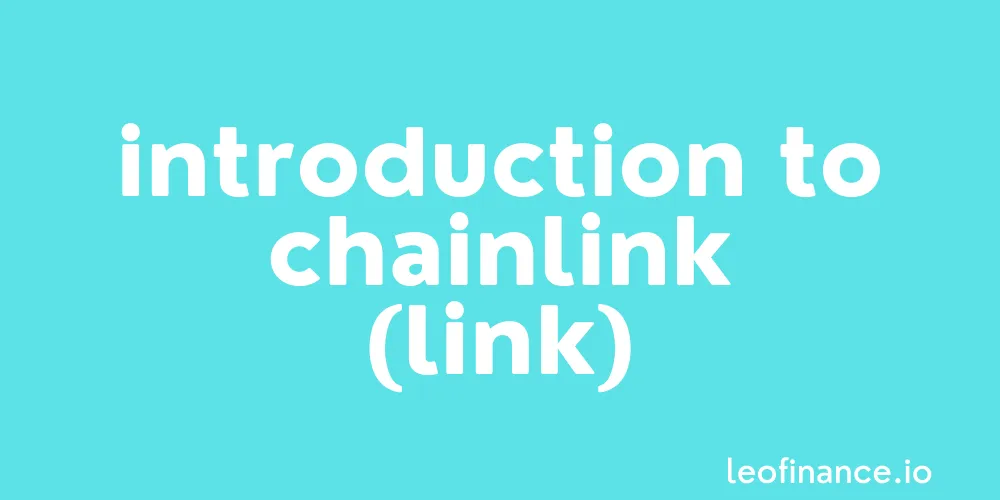
An introduction to Chainlink crypto (LINK), the most shilled coin on crypto Twitter.
Chainlink calls itself a decentralised blockchain oracle network.
Built on Ethereum, Chainlink is used to facilitate the transfer of tamper-proof data from off-chain sources to on-chain smart contracts.
In a world where the data found on blockchains can be isolated from the ‘real world’, Chainlink offers a valuable link.
Chainlink's decentralized oracle network provides reliable, tamper-proof inputs and outputs for complex smart contracts on any blockchain.
This Chainlink guide takes a deep dive into the most shilled coin on crypto Twitter.
Yep, the fact we’ve chosen Chainlink as our next featured crypto guide, shows that the Link Marines are certainly doing their job.
Introduction to Chainlink crypto (LINK)
Let’s introduce the LINK cryptocurrency and go over what the Chainlink network actually does.
To begin with, we need to make a distinction between the LINK token and the network which includes the Chainlink protocol.
Let’s start this guide by jumping right in and briefly introducing each aspect below.
LINK token
As we mentioned briefly above, Chainlink is actually built on top of the Ethereum blockchain.
This means that LINK, the native token of the Chainlink protocol, is actually an ERC-20 token.
Being an ERC-20 token, this means that the LINK token can be managed and stored using an Ethereum compatible wallet such as MetaMask or a Ledger.
Simply send and receive LINK tokens to an Ethereum address like you would any other ERC-20 token.
Currently, the LINK token has two main use-cases:
- Payments: Used for internal payments such as to node operators who maintain the network.
- Staking: Also used by the same node operators who must stake LINK in order to participate and provide requested data services.
When it comes to node operators who stake LINK, those with a higher stake stand more of a chance of being selected to provide data.
In terms of price, let’s finally take a look at the following chart from CoinGecko:
Without going into any deep technical analysis, let’s just say there are worse looking charts in the cryptosphere.
The Chainlink Network
The Chainlink protocol is a decentralised network of nodes that enables real-world data to be made available on-chain.
Of course for a more in-depth look at how the Chainlink protocol works, check out the Chainlink white paper.
But in summary, the Chainlink protocol’s two components are as follows:
- A network of outbound nodes to request off-chain data.
- A network of inbound nodes to synchronise the requested off-chain data onto the blockchain.
So why are the oracles that Chainlink facilitates so important?
Well, in order for blockchain-based smart contracts to be able to read real-world data and truly become relevant, a trusted synchronisation method must be used.
Chainlink provides this method by using oracles to bridge on-chain and off-chain data.
Chainlink certainly has the potential to back up its fair comparison to Ethereum and this guide will continue to explore whether that potential can ever realistically be fulfilled.
Best of probabilities to you.
Direct from the desk of Dane Williams.
Why not leave a comment and share your thoughts on Chainlink crypto (LINK) within the comments section below? All comments that add something to the discussion will be upvoted.
This Chainlink crypto blog is exclusive to leofinance.io.
Posted Using LeoFinance Beta
Return from Introduction to Chainlink crypto (LINK) to forexbrokr's Web3 Blog

